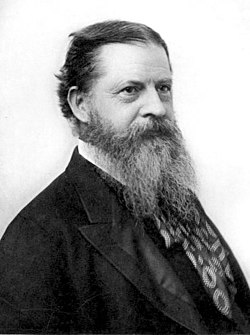
Back بوابة نفي أو Arabic Peirce-Funktion German Malaŭo Esperanto Disyunción opuesta Spanish EZ-EDO ate logikoa Basque نقیض یا Persian Peircen nuoli Finnish Fonction NON-OU French NOR לוגי HE Algebra di Boole#NOR Italian
| NOR | |
|---|---|
 | |
| Definition | |
| Truth table | |
| Logic gate | |
| Normal forms | |
| Disjunctive | |
| Conjunctive | |
| Zhegalkin polynomial | |
| Post's lattices | |
| 0-preserving | no |
| 1-preserving | no |
| Monotone | no |
| Affine | no |
| Self-dual | no |
| Logical connectives | ||||||||||||||||||||||
|---|---|---|---|---|---|---|---|---|---|---|---|---|---|---|---|---|---|---|---|---|---|---|
|
||||||||||||||||||||||
| Related concepts | ||||||||||||||||||||||
| Applications | ||||||||||||||||||||||
|
| ||||||||||||||||||||||
| Part of a series on |
| Charles Sanders Peirce |
|---|
 |
| Pragmatism in epistemology |
| Logic |
| Semiotic theory |
| Miscellaneous contributions |
| Biographical |
In Boolean logic, logical NOR,[1] non-disjunction, or joint denial[1] is a truth-functional operator which produces a result that is the negation of logical or. That is, a sentence of the form (p NOR q) is true precisely when neither p nor q is true—i.e. when both p and q are false. It is logically equivalent to and , where the symbol signifies logical negation, signifies OR, and signifies AND.
Non-disjunction is usually denoted as or or (prefix) or .
As with its dual, the NAND operator (also known as the Sheffer stroke—symbolized as either , or ), NOR can be used by itself, without any other logical operator, to constitute a logical formal system (making NOR functionally complete).
The computer used in the spacecraft that first carried humans to the moon, the Apollo Guidance Computer, was constructed entirely using NOR gates with three inputs.[2]

















































